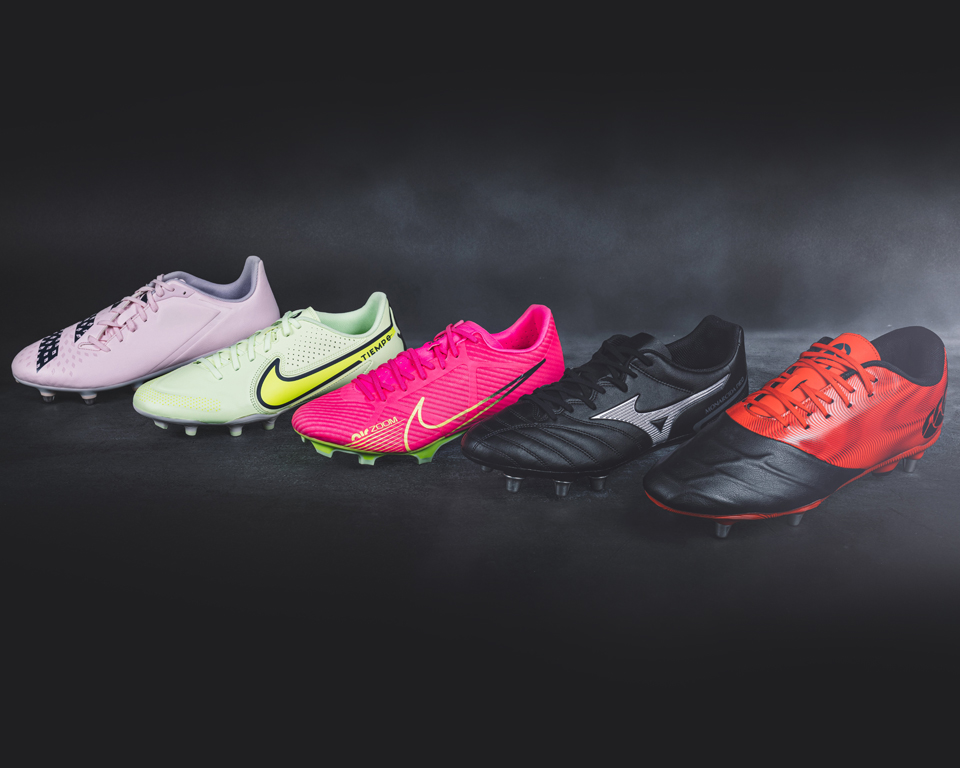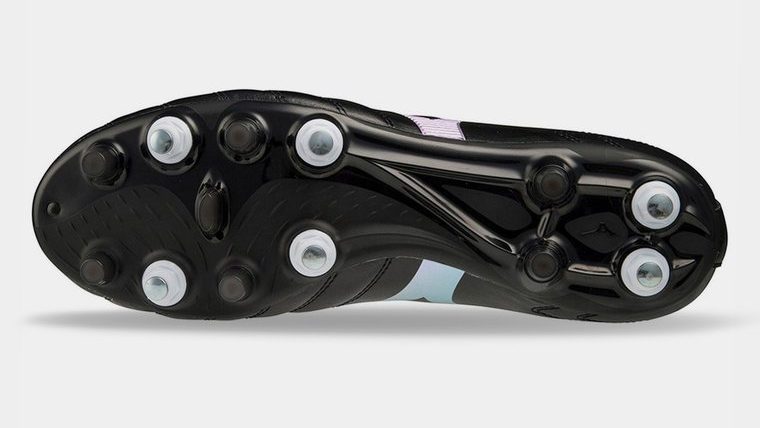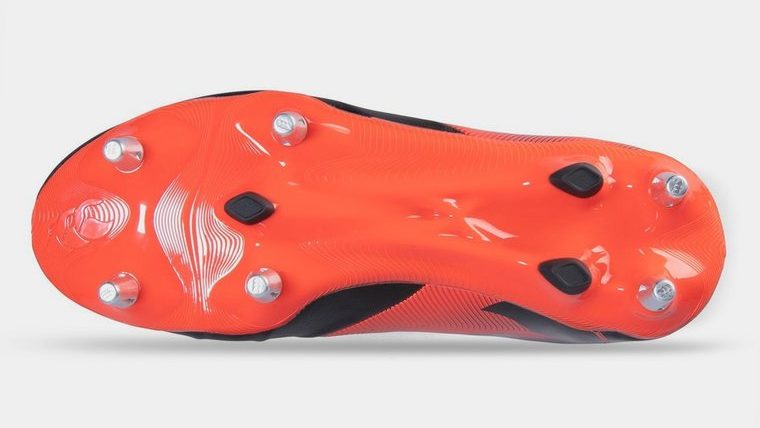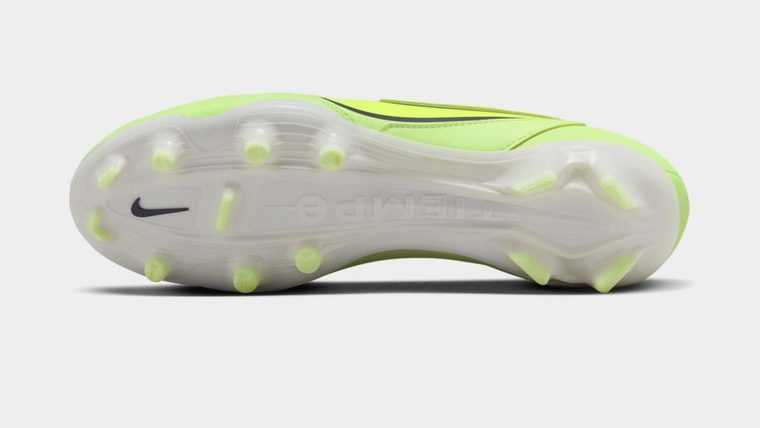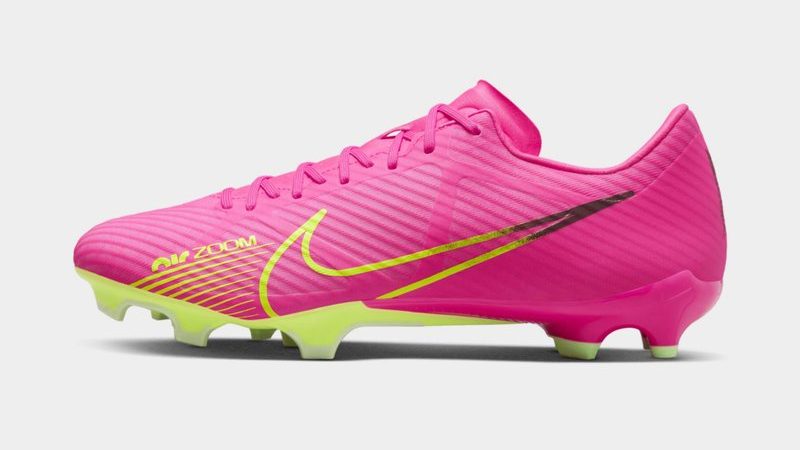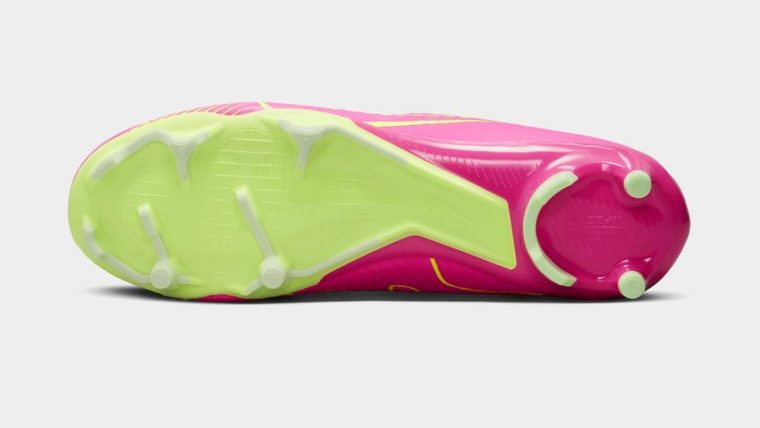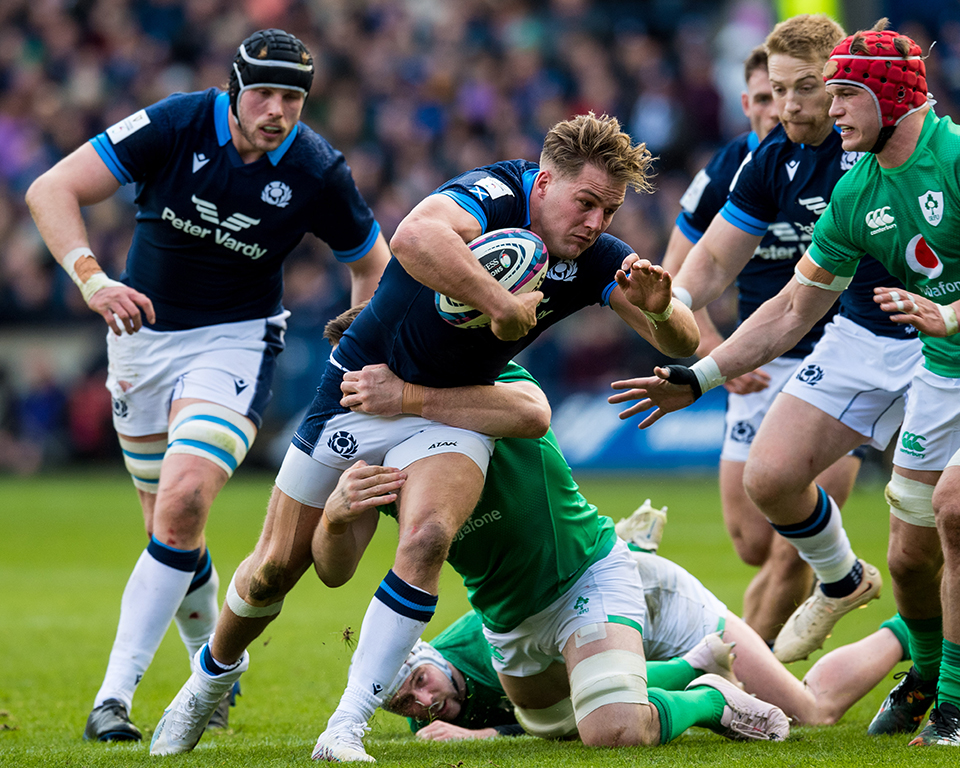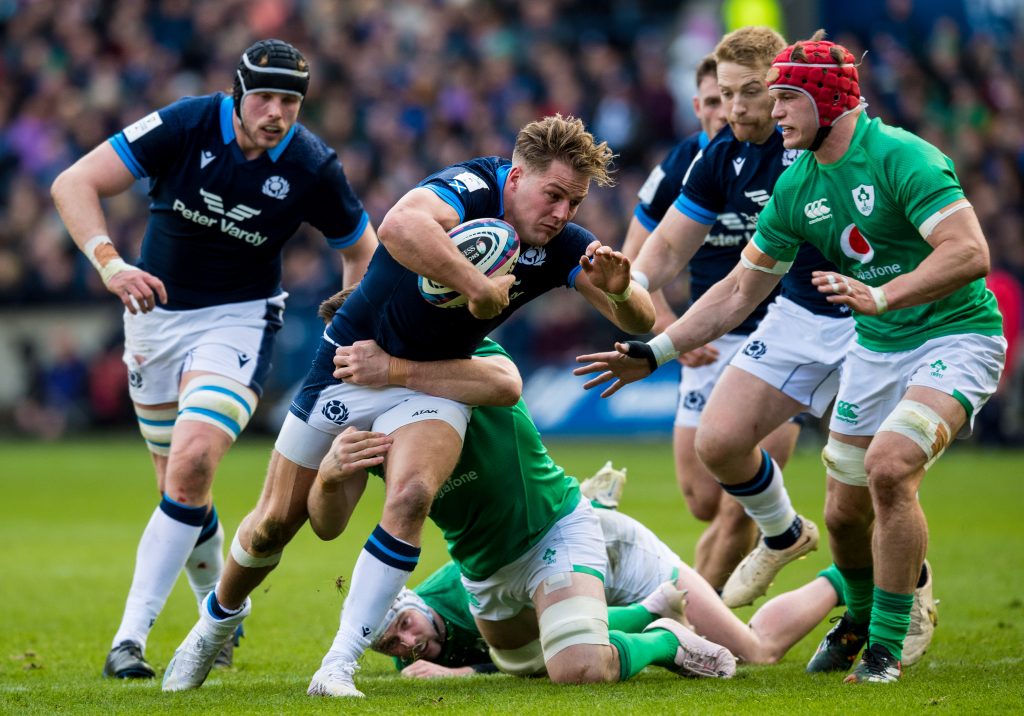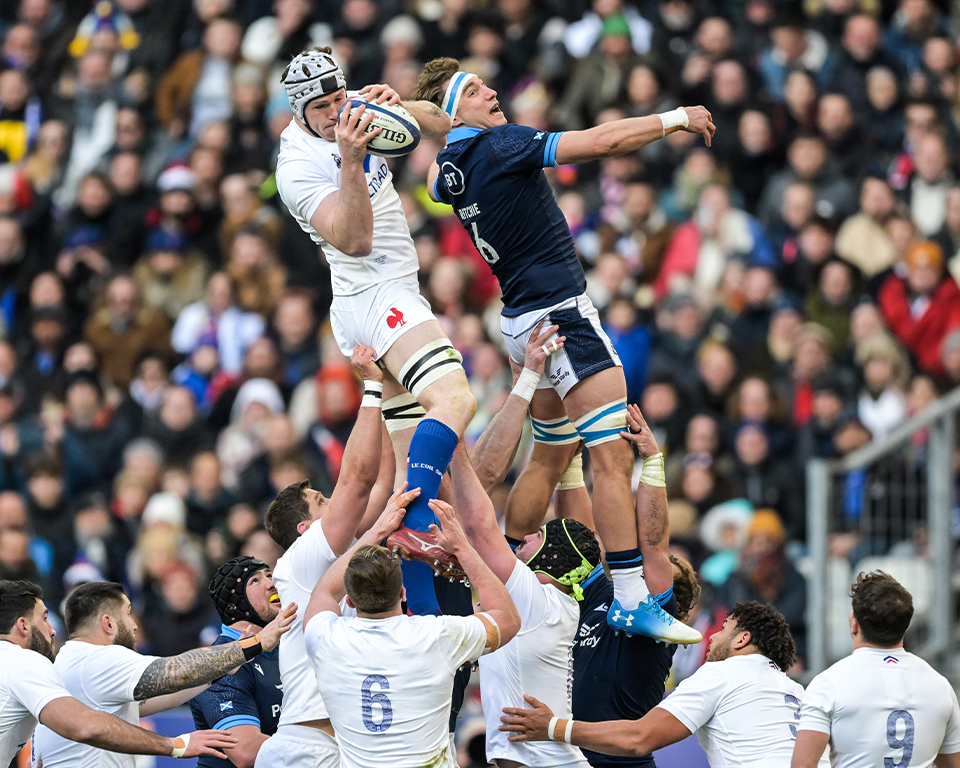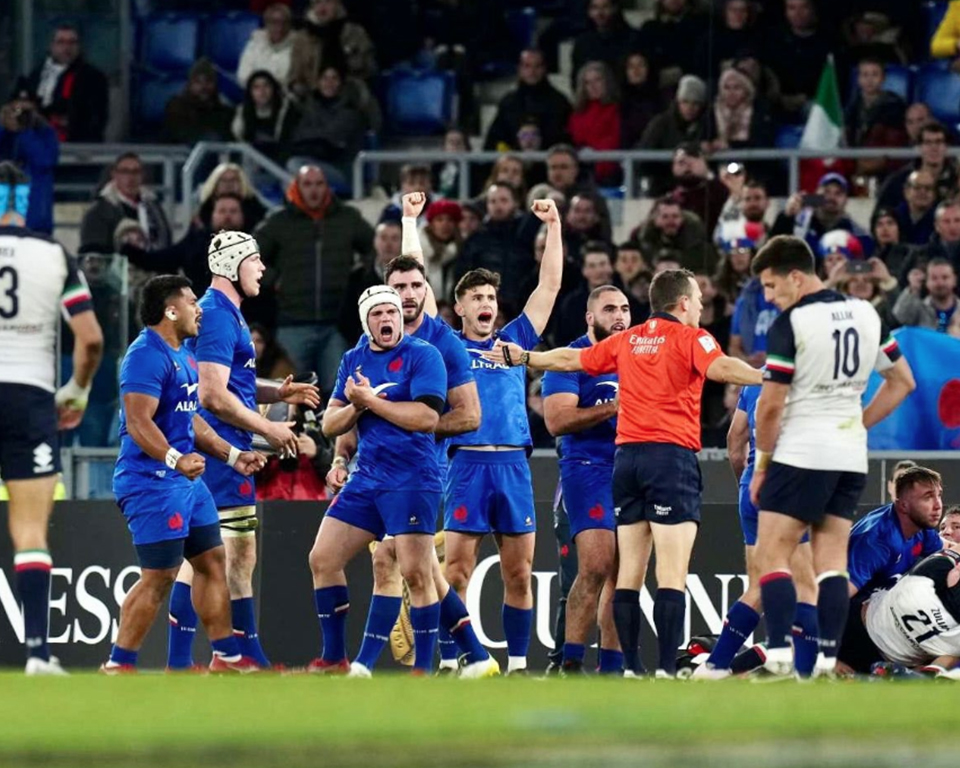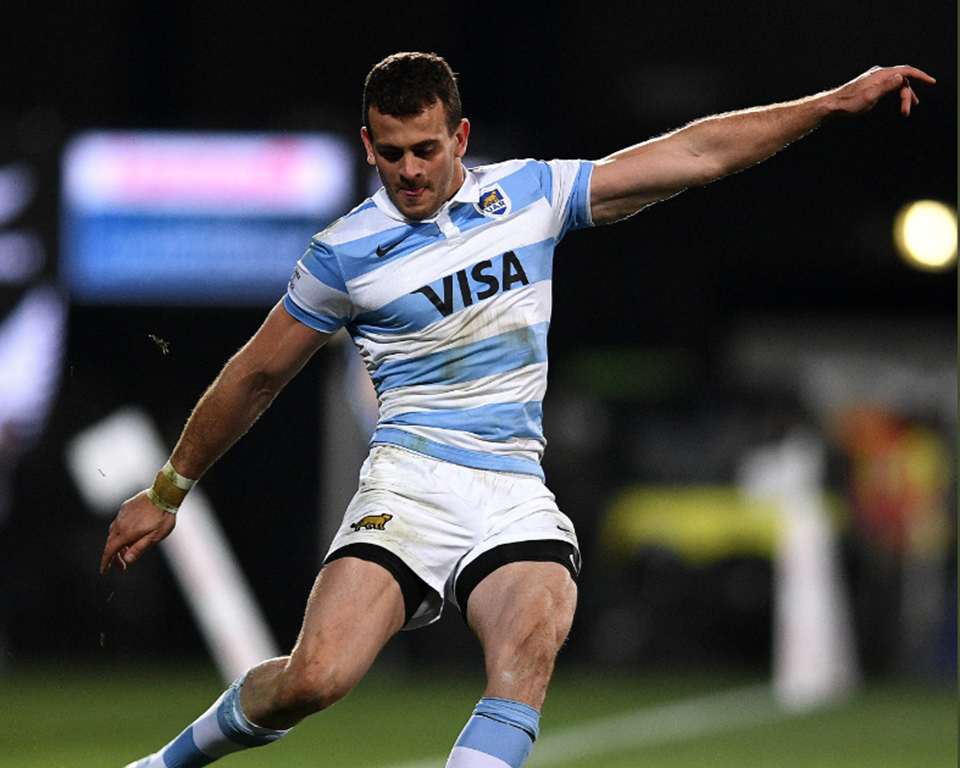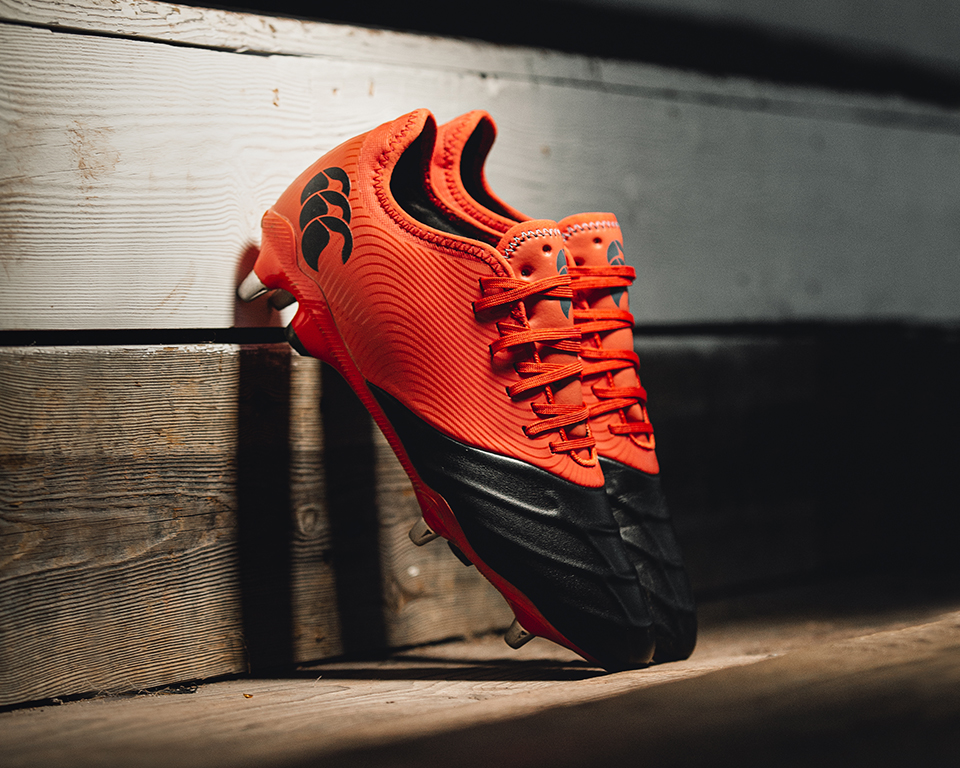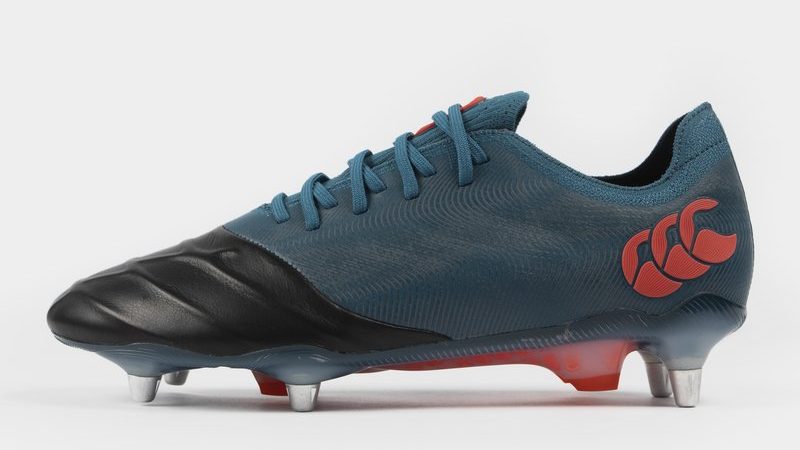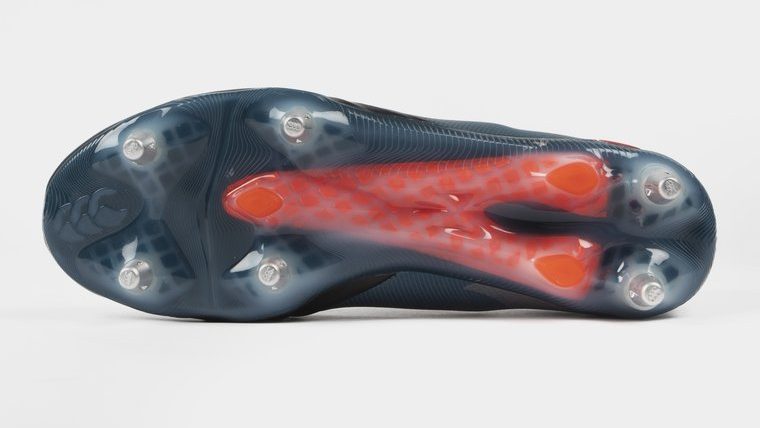In this exclusive interview, Matt Fielding (adidas Category Director) and Ben Herath (VP Design) share insights into the design process and discuss why this year’s Rugby Jersey is the most sought-after.
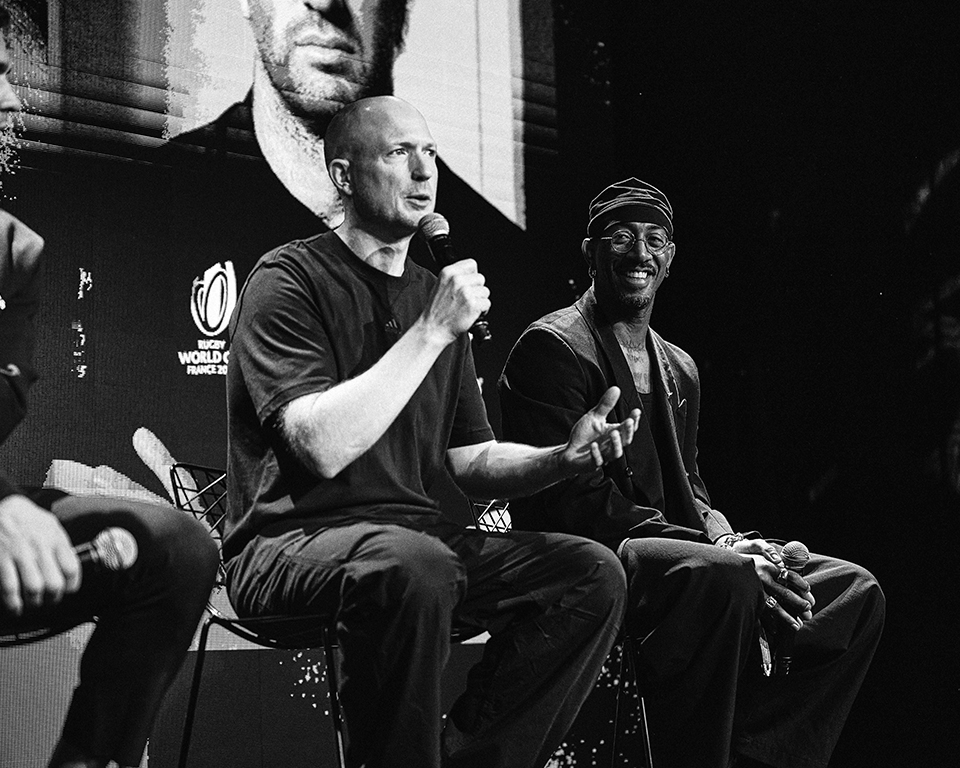
“What specific technological advancements or innovative features have been incorporated into this shirt to enhance performance?”
Ben Herath
“First and foremost the jersey is a performance item, it needs to work on best players in the world at top of play. Working hand in hand with the players, the first criteria was strength. The material needs to be strong and withstand all of the forces, the rigours that players are going to put it through.
We took that right down to a yarn level, looking at the strength of the yarns, and the strengths of the seams. Once we had this strong material, the next thing the players asked for was lightweight.
But what they really meant, I think, was what we termed ‘right weight’, not lightweight, by getting the right weight for the jersey, which is the right strength to weight ratio.
The jersey ended up with the material weighing 229 grams, which again was quite an achievement, it’s lighter than the previous world cup jersey.
And so, after being lightweight, players were after comfort- how this feels, so we were able to engineer into the fabric this elastane yarn that helps the fabric to stretch around the body, so we need to accommodate all sorts of body shapes and sizes with the jersey.
This was quite a challenge aswell, and so we engineered this woven fabric that was able to do that. Hold up with strength, be lightweight, aswell as stretch to the body.”
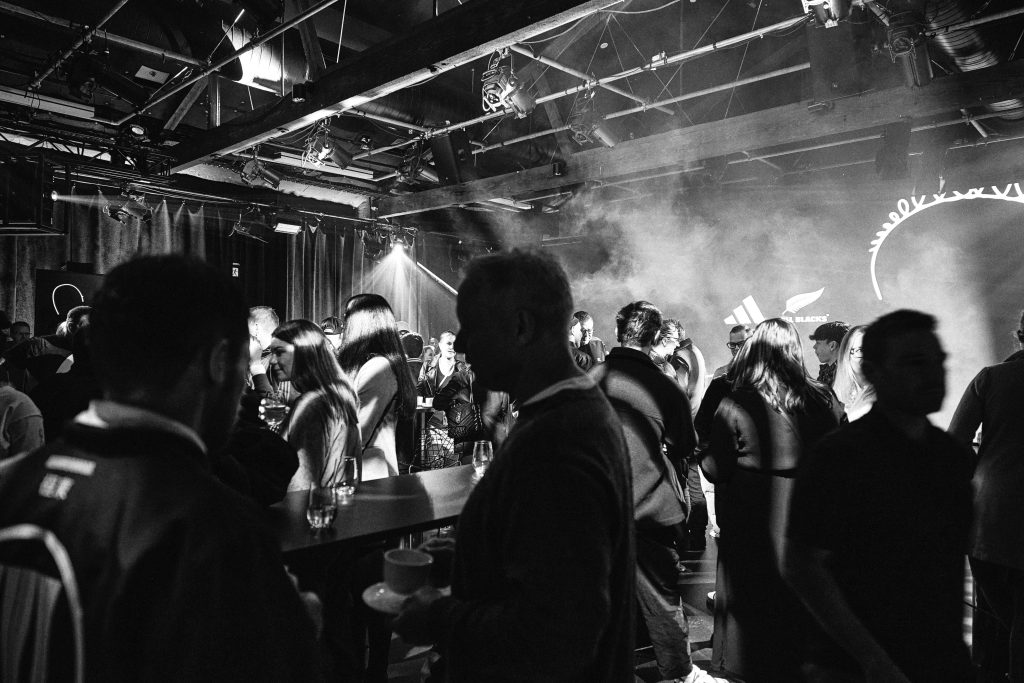
“Are there any unique materials or fabric technologies used in the construction of the shirt?”
Ben Herath
“I think from a performance aspect, that’s critical at the top of our ambitions too is that the jersey has to perform well. Every millimeter is considered, down to the tapering of the fabric. If you look carefully at the seams, they are triple stitched, reinforced on the backside with a herringbone tape. We looked from the data where the stress points of the jersey were and anchored those.
There are aspects of this too, which we have fully engineered too, to make sure it performs at the highest level and that was from day 1. One of the key criteria, is that the jersey has to perform well.”
“One of the aspects we’re quite proud of is the high amount of recycled content for this jersey, which meant we had in the beginning, almost 3 years ago, 5 different materials under testing aswell, the moment we had the material we would quickly sample it and get it onto players, get it tested. One by one, those materials, 4 out of the 5 failed as we went through and one made it through the process, and that one is on the jersey today, and that material is 89% recycled content. The 11% is the elastane stretch that we needed in the jersey, that’s the performance aspect, but for 89% of the jersey, it’s recycled.
It’s the first time ever we’ve managed to do that, to bring recycled content onto a jersey on this field of play, so for us, doing the right thing by the planet is a key ambition we have as a brand, which again is something we’re proud of with the jersey.”

“Are the shirts made bespoke for each player – or how hard is it to get a fitted shirt across all the different shapes and sizes of the players?”
Ben Herath
“I think the key ask from the players is something that feels like an extension of the body, almost something where when they put it on they don’t feel it, but feels part of them.
That really means designing it for all the movements of rugby- the explosive sprints, the twists and turns, the scrum action, the force and all of this which goes on with the jersey. The key feature of the jersey then became this ergonomic side panel that’s underneath the arm, so that when players raise their arm, the jersey stays in place.
With this, it allowed us to engineer the jersey again so that it moves with the body for all the different movements.”
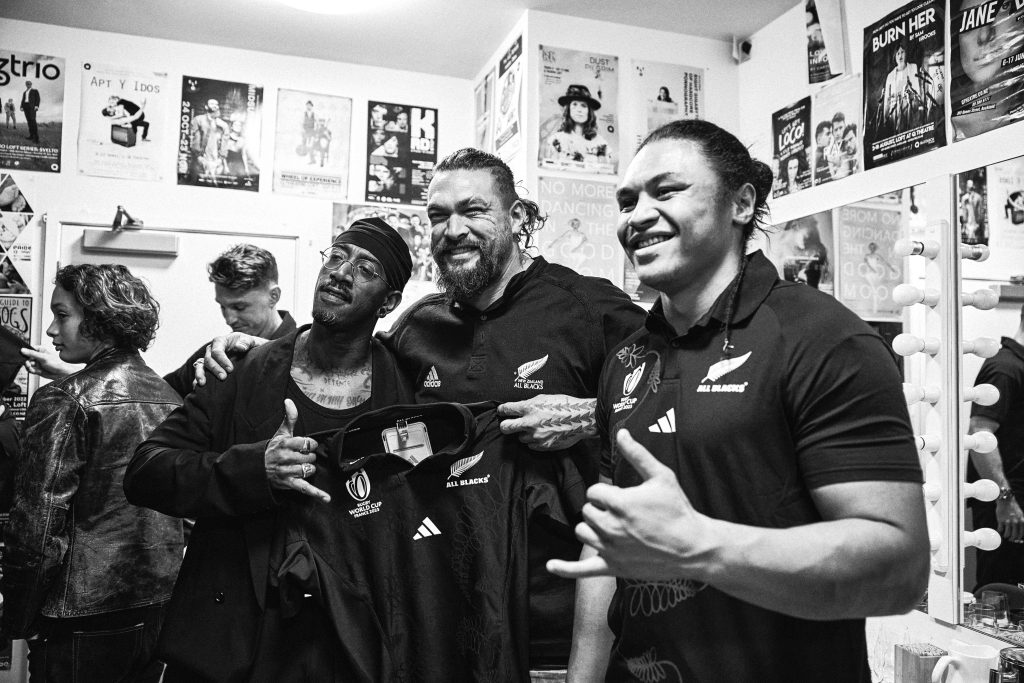
“What are the main differences between the players version and the replica?”
Matt Fielding
“I think it’s possibly the first time we’ve approached it this way and it’s part of the storytelling Fey was able to bring to the design and this was an opportunity for us to bring something for the players, and that’s for them.
We had this specific design of the ferns all pointing inwards, 14 ferns plus the crest for the players and then for the fans we’re offering something that’s really unique.
It’s built around the sustainable element aswell and how we can reduce the amount of wastage that we’re doing with every jersey. We sell a lot of All Black jerseys and so it’s important that all of them are cut from the same cloth, the same amount of fabric. What this means is that there is a repeated pattern of the fern, so that it is the same beautiful fern that Fey has designed, but is actually produced on a roll of fabric that can be produced on the front, back and the sleeves.
We’re also using up a lot more of the material, so we’re throwing away a lot less. That’s the difference, but gives each supporter a unique World Cup experience that’s slightly different from the next. We though this was a powerful way to bring the jersey to everybody.”
Ben Herath
“To build on that, we like this idea that we’re uniting all fans, but also giving them something that’s unique, so united and unique and no two replica jerseys will be the same.
Each fan will be able to have their own piece of art, that is one of its kind and unique.”
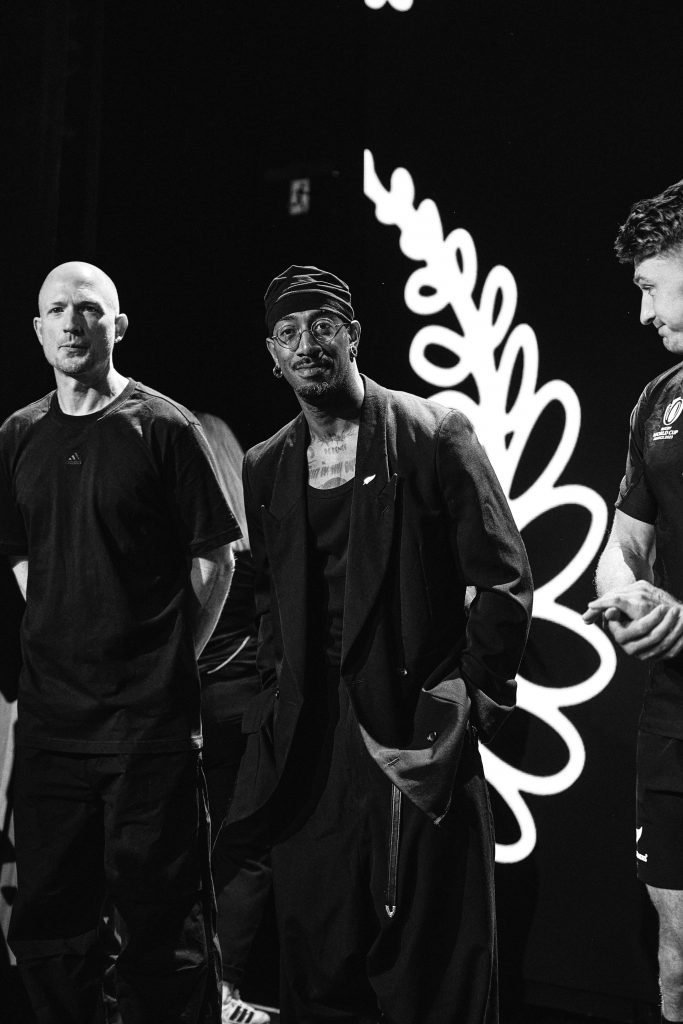
“How many iterations of the shirt are there before the final article is produced?”
Ben Herath
“I think we built around 10-12 different jerseys throughout those three years across 4 or 5 different materials we tested aswell.
It was a huge undertaking and exploration to make sure that the final jersey is what it is and really that’s everything we can do to make sure we’re leaving the jersey in a better place.”
Matt Fielding
“To add to that from a more emotional level, the jersey we worked on it for 3 years, this is an always on production, we’ve been building on what we’ve done on past jerseys, keeping the best elements of it, building upon those areas where we need to improve and then adding the latest innovation. It’s something we always keep true, in terms of listen, test, modify, where we’re always improving on what’s gone before and then bringing in the new innovations we can bring to the jersey.
“Are there specific requirements from the RWC that you must have within the shirt in comparison to a normal year of rugby?”
Matt Fielding
“From a design and performance view, there is no difference. We always put everything we’ve got into the jersey.
The fact it’s a world cup is a beautiful landmark for the sport and a great coming together of all rugby fans and all nations, and a great opportunity for all nations around the world to see the All Blacks – they are the most revered yet respected team in rugby and maybe in world sport.
It’s a great opportunity for everyone to come and have a look at how the All Blacks play and so for us, it’s business as usual, bringing the most innovation we can and the most relevant information and making the jersey as strong and as good as we can make it for whichever tournament, whether it’s Rugby Champs, whether it’s autumn internationals, World Cup is obviously a huge moment for sport. So, from a performance level I would say definitely, business as usual.”
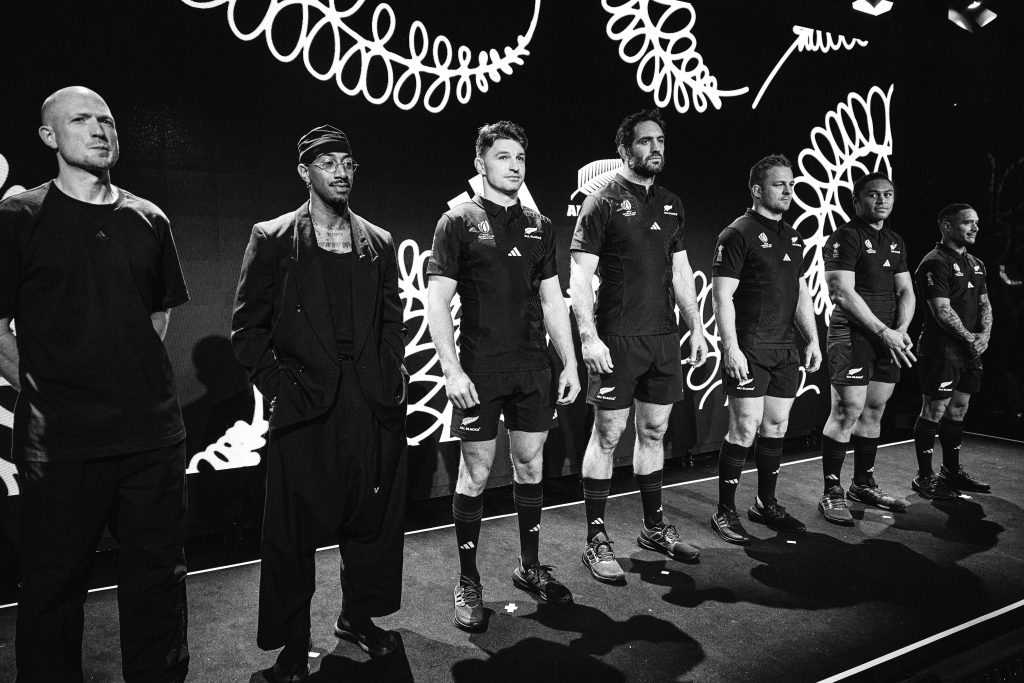
Ben Herath
“Firstly our expectation at performance level is always at the super high level. However, we know at the World Cup, it is a moment when the world is watching, it’s a heightened moment for rugby and for us, it’s a chance for us to align the lifecycles of the jersey so we’re able to launch something special as a special moment.
For us, this moment is really a culmination of three years of work and that constitutes roughly the life cycles of World Cup where once we get through one, the learnings build to the next and then the next.
This relationship with All Blacks has been 20 plus years of partnership, and every World Cup builds onto the next, and the learnings feed and feed and feed. What we’re seeing from a design point of view when we come round to the World Cup is a higher expectation level from a design point of view and to ensure that we’re continuing to contribute to the legacy that’s there.”
What players are involved in testing & providing feedback before the launch?”
Matt Fielding
“In the initial stages we worked with the core of the leadership group within the All Blacks, so players who had been playing for some time who understand what it is fully to respect the legacy of the journey and hand it through. So it was important that Fey spoke with them and got grounded.
Throughout the process we worked with the team and the squad throughout the testing so that all players could input and add their insights into how the jersey is progressing throughout those three years.
It took a long time, but we had a great meeting with the fall players, including Ardie, Aaron, Boden and Sam.”
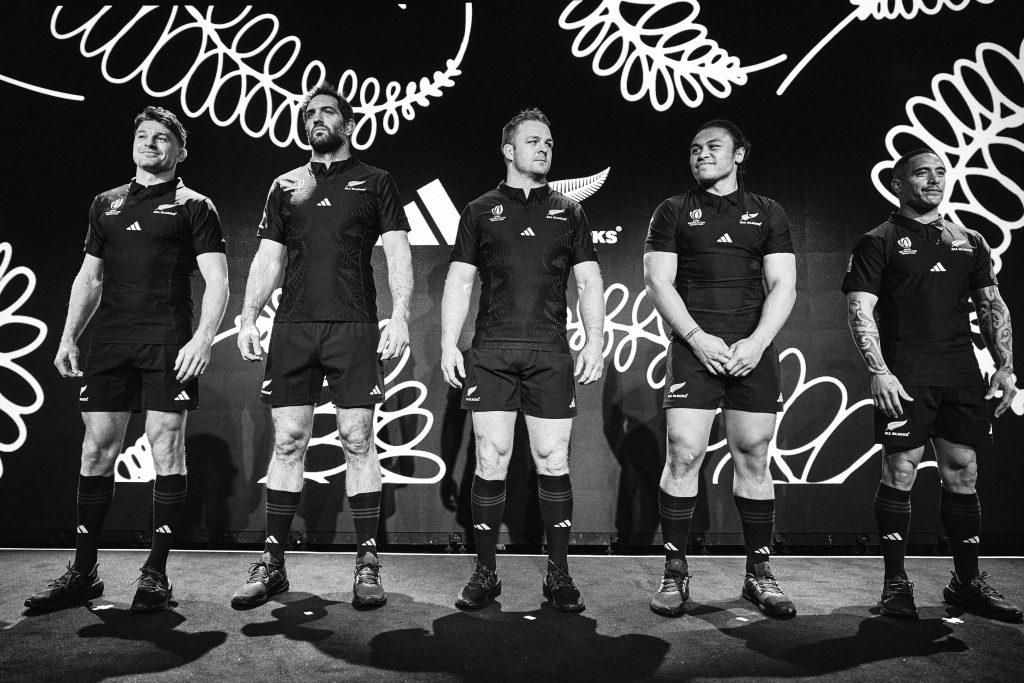
“How long did it take to design & complete this RWC Shirt?“
Ben Herath
“It was a long process – almost 3 years in the making! We work not just with the players but with the New Zealand Rugby organization aswell. There is a lot of history and legacy within the team, so it was important Fey met with them and as many people as we could speak so we could really understand the values of the jersey. “
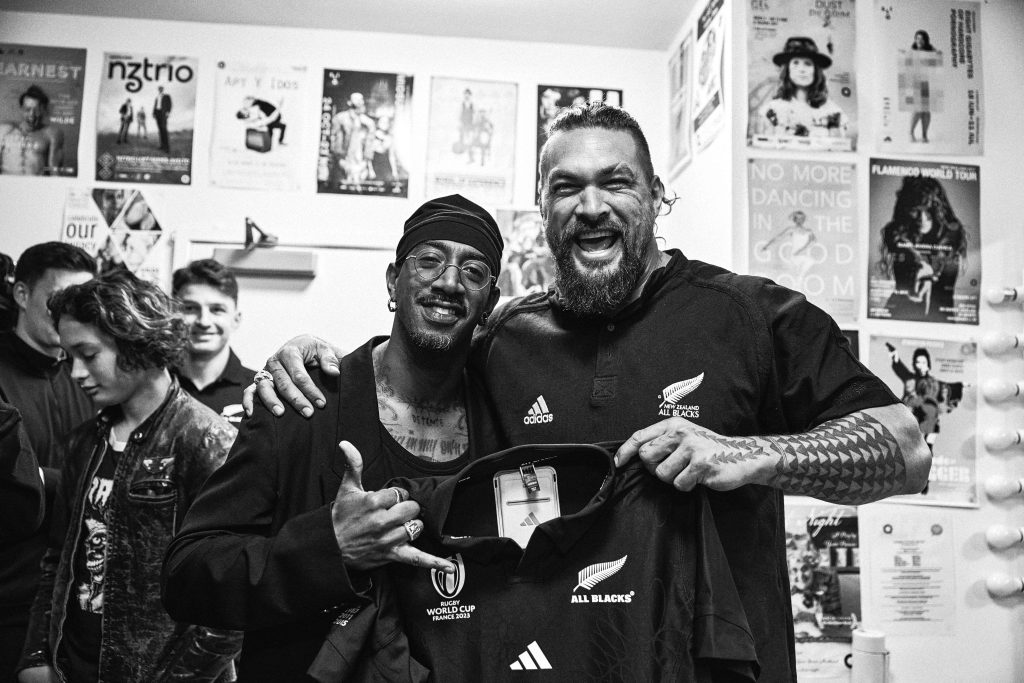
“With the All Blacks being such and iconic team in the world of rugby do you feel added pressure when looking to redesign and produce a new All Blacks Shirt?“
Matt Fielding
“The design process behind the All Blacks Jersey and the Black Ferns jersey aswell, there’s an immense weight. This is the pride of the nation of New Zealand.
This is one of the iconic, if not the most iconic teams in rugby and in the world, so there is a great deal of seriousness we take into each and every design phase, to build on what has gone before.
But the insight that we can get from the players, the people of New Zealand and the consumers that we can talk to. I don’t think we’ll ever fully understand what it’s like to put on the All Blacks’ jersey, so all the information that we get, we can reimagine how that might feel and build that into the jersey. But there is a significant weight I think, on every design that we do.”
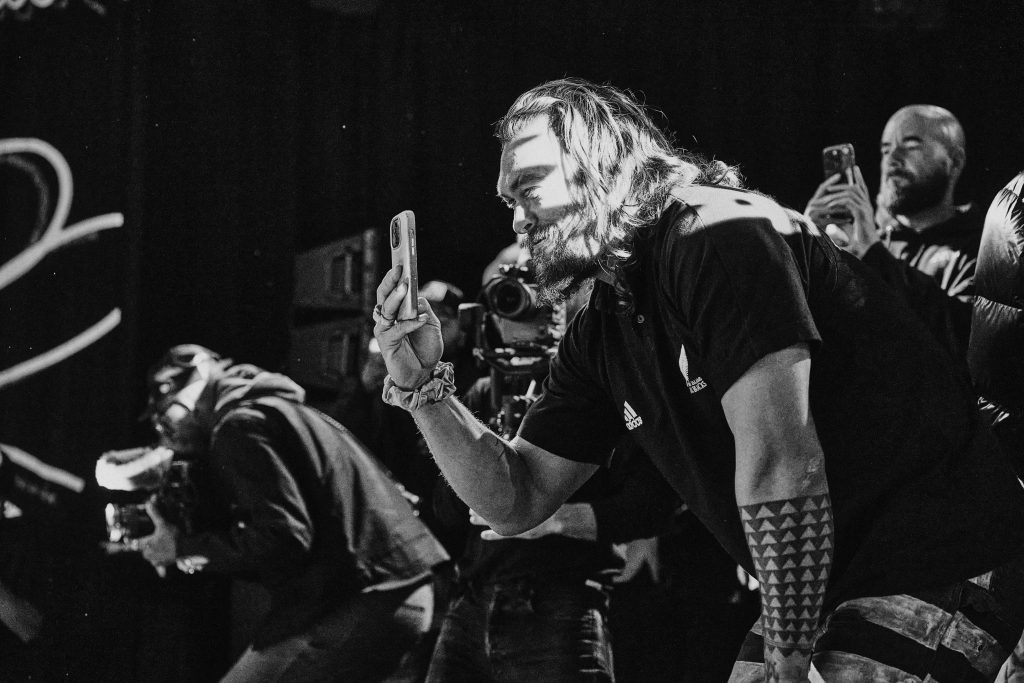
“The 2023 shirt features a fold over collar- what was the reasoning and thought process behind this?“
Ben Herath
“One of the key parts for us is that the jersey is an icon, it’s an iconic jersey and we wanted to create something that was truly an icon for the All Blacks, but also for Rugby.
We wanted to make sure that we were reaching into Rugby DNA and the codes of rugby and bringing those back.
So we looked at the rugby collar, and this is something that players have asked for, fans have asked for, and so we looked at the collar and wanted to bring the collar back, but right for performance and also in a contemporary modern way.
We are able to create this collar in an entirely new construction, it’s built actually as a one piece. If you look inside there is a seam around the neck, that’s never been done before. We’re proud of engineering this. All the way this is anchored to the rest of the jersey is through a hidden seam that’s underneath the collar.
We then used a double layer material around the collar to give it the stance, structure and support and then we stitched it down so during play it retains its stability. So there is a huge amount of work and engineering that went into the collar to make sure that we’re doing something that’s right for performance, but is a modern take on a rugby collar aswell.
At the end of the day too, we wanted something was bespoke and beautiful and something that the players are gonna feel proud wearing and we feel we’ve achieved that with this new design.”

Want to get your hands on the latest 2023 All Blacks Rugby Jersey? Look no further than Lovell-rugby.co.uk.
In the meantime, be sure to stay in the loop with the latest Rugby News, Guides & Boot Launches at The Full 80.

